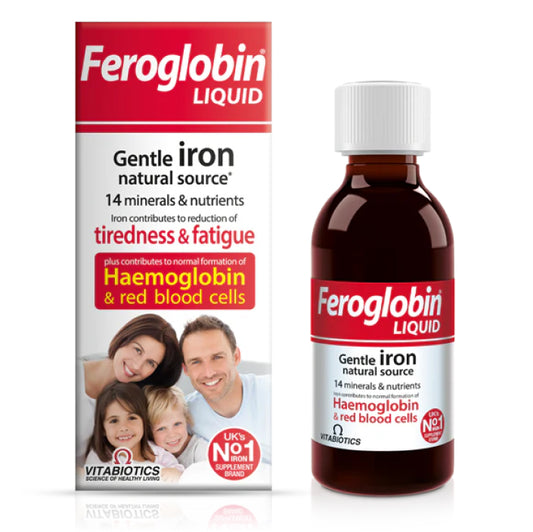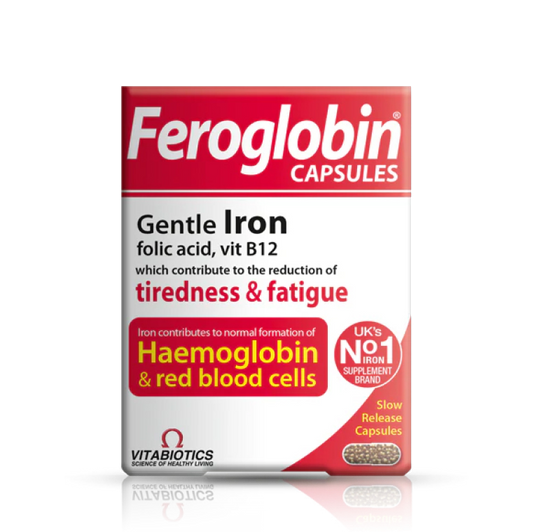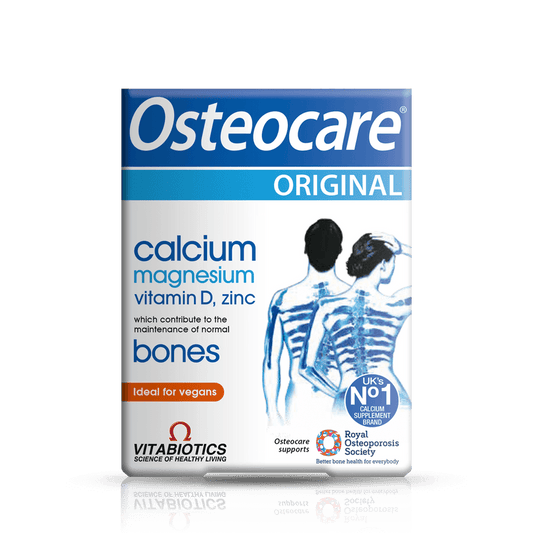Have you ever felt chronic fatigue, mood swings, or maybe your skin has become irritated? Sometimes, these ailments can be caused by a deficiency of important nutrients. One of them is vitamin B6, often underestimated, but plays an extremely important role in our bodies. Also known as pyridoxine, it is essential for the proper functioning of many metabolic processes and maintaining general well-being. Because it is a water-soluble vitamin, our body cannot store it in large quantities, which means that we must regularly supply it with food. Its versatility is demonstrated by its participation in over 100 enzymatic reactions, which emphasizes its fundamental importance for our health.
Forms of vitamin B6 and their action in the human body
When talking about vitamin B6, it is worth knowing that the term refers to a group of six related compounds, called vitamers , that exhibit vitamin B6 activity.
The three main naturally occurring forms of vitamin B6 are:
- Pyridoxine (PN)
- Pyridoxal (PL)
- Pyridoxamine (PM)
Pyridoxine is the form most commonly found in dietary supplements and fortified foods , and its chemical stability makes it ideal for these uses. Pyridoxal and pyridoxamine are the forms naturally found in foods, with pyridoxal being found in both plant and animal foods and pyridoxamine being found primarily in animal foods. However, the forms we take into our bodies are not directly used. They must be converted into the active form, pyridoxal phosphate (PLP), also known as P5P.
The active form of vitamin B6, PLP, acts as a coenzyme for over 100 different enzymes in our body , most of which are involved in the metabolism of proteins, but also carbohydrates and fats. It is thanks to PLP that vitamin B6 can perform so many important functions for our health.
What are the most important functions of vitamin B6?
Vitamin B6, specifically its active form PLP, plays a fundamental role in many metabolic processes. It is essential for the proper metabolism of proteins, fats and carbohydrates. PLP helps our bodies break down proteins into amino acids, use fats as a source of energy and convert carbohydrates into glucose . In addition, vitamin B6 is involved in gluconeogenesis (the process of creating glucose from non-sugar sources) and glycogenolysis (the release of glucose from glycogen stores), which is crucial for maintaining stable blood sugar levels .
Another extremely important function of vitamin B6 is its participation in the production of neurotransmitters , which are chemical messengers in our brain. PLP is an essential cofactor in the synthesis of such key neurotransmitters as serotonin (responsible for regulating mood and sleep), dopamine (related to pleasure and motivation), noradrenaline and adrenaline (stress response) and GABA (an inhibitory neurotransmitter with a calming effect).
Vitamin B6 also takes part in the synthesis of histamine, which plays a role in the immune response and other processes in the body.
The role of vitamin B6 in supporting the production of hemoglobin cannot be forgotten. PLP is a key coenzyme in the synthesis of heme, the iron-containing component of hemoglobin found in red blood cells. Hemoglobin is responsible for transporting oxygen from the lungs to all the tissues and organs of our body.
In addition to these key functions, vitamin B6 is involved in many other important processes in our body. It supports the immune system by helping to produce antibodies that fight viruses and infections, and by supporting the function of immune cells such as lymphocytes.
See also: Vitamin B2: Your Key to Energy and Well-Being
Vitamin B6 is also involved in various aspects of amino acid metabolism, including transamination (transferring amino groups), decarboxylation (removing carboxyl groups), and racemization (conversion between different forms of amino acids). Vitamin B6 also participates in the conversion of tryptophan to niacin (vitamin B3) and in the synthesis of sphingolipids, which are important components of nerve cell membranes. There is also evidence that vitamin B6 may affect the expression of certain genes, suggesting an even more complex role for it in the body. Its importance in maintaining normal blood levels of homocysteine , an amino acid whose high levels are associated with heart disease, cannot be overlooked.
Where to Find Vitamin B6? Best Food Sources
The good news is that vitamin B6 is widely available in a wide variety of foods, both animal and plant origin.
Animal sources rich in B6 include primarily:
- Fish such as tuna, especially yellowfin, and salmon, especially sockeye
- Beef liver and other offal
- Poultry (chicken breast, turkey), beef, pork and eggs
When it comes to plant sources of vitamin B6, it is worth reaching for:
- Chickpeas
- Potatoes (especially cooked) and other starchy vegetables
- Fruits (bananas, avocados, mangoes, papayas, oranges – although non-citrus ones are usually a better source, cantaloupe)
- Legumes (beans, lentils, soybeans in the form of tofu and tempeh)
- Nuts (walnuts, hazelnuts, pistachios, peanuts)
- Seeds (sunflower, sesame)
- Spinach
- Fortified cereals and whole grains (brown rice, quinoa, oats)
It is worth remembering that some fruits, vegetables and cereals naturally contain glycosylated forms of pyridoxine, which are characterized by lower bioavailability .
To make it easier for you to find your way around, we present a table with examples of products and their approximate vitamin B6 content:
|
Product (Food) |
Serving Size |
Vitamin B6 content (mg) |
Percent Daily Value (% DV)* |
|
Chickpeas, canned |
1 cup |
1.1 |
65 |
|
Beef liver, fried |
85g |
0.9 |
53 |
|
Yellowfin tuna, cooked |
85g |
0.9 |
53 |
|
Sockeye salmon, cooked |
85g |
0.6 |
35 |
|
Chicken breast, baked |
85g |
0.5 |
29 |
|
Breakfast cereals, fortified |
1 cup |
0.4 |
25 |
|
Potatoes, boiled |
1 cup |
0.4 |
25 |
|
Banana |
1 medium |
0.4 |
25 |
|
Marinara sauce |
1 cup |
0.4 |
25 |
|
Ground beef |
85g |
0.3 |
18 |
|
Mixed nuts |
28g |
0.1 |
6 |
|
Spinach, frozen, cooked |
½ cup |
0.1 |
6 |
*Percent Daily Value (DV) based on the recommended value of 1.7 mg for adults.
See also: Balanced diet for women
What are the symptoms of vitamin B6 deficiency?
Although severe vitamin B6 deficiency is rare in developed countries, mild deficiencies can occur, especially in certain groups of people. Symptoms of vitamin B6 deficiency include:
- Skin rashes - often itchy and scaly, known as seborrheic dermatitis, which can appear on the face, scalp and chest
- Cracked and sore lips - especially at the corners (angular cheilitis), and a sore, smooth and red tongue (glossitis)
- Mood changes - including irritability, confusion, anxiety and depression, as well as a weakened immune system and increased susceptibility to infections
- Anemia - which can be microcytic (with small red blood cells) or sideroblastic (with iron build-up in the red blood cells)
- Peripheral neuropathy - characterized by tingling, numbness and pain in the hands and feet
- Convulsions and difficulty in coordinating movements, nausea, vomiting - may occur in severe cases (especially in infants)
Factors that increase the risk of vitamin B6 deficiency include kidney disease, malabsorption syndromes (such as Crohn's disease, celiac disease), alcohol abuse, certain medications (e.g. isoniazid, cycloserine, valproic acid, phenytoin, carbamazepine, primidone, hydralazine, theophylline, oral contraceptives, corticosteroids), autoimmune diseases (e.g. rheumatoid arthritis), and a high-protein diet.
What are the benefits of maintaining adequate levels of vitamin B6?
Maintaining the right level of vitamin B6 in the body brings many health benefits. First of all , it supports the nervous system by participating in the production of neurotransmitters , which are necessary for the proper functioning of the brain and the transmission of nerve signals. This translates into a better mood, reduced stress levels and improved sleep quality . Vitamin B6 also plays an important role in strengthening immunity by supporting the production of white blood cells and antibodies , which help our body fight infections and diseases.
Other potential benefits of getting enough vitamin B6 include alleviating morning sickness (MS), which is often recommended as a first-line treatment. Some research suggests that vitamin B6 may also help relieve symptoms of premenstrual syndrome (PMS) , such as mood swings, irritability, and bloating, although the evidence is mixed. There is also preliminary evidence linking adequate vitamin B6 intake with a lower risk of some types of cancer, particularly colon and digestive tract cancer, but more research is needed in this area.
Vitamin B6 also helps maintain healthy levels of homocysteine , an amino acid linked to heart disease, although studies have not consistently shown that supplementing with vitamin B6 reduces the risk of cardiovascular events. Some studies suggest a link between higher blood levels of vitamin B6 in older people and better memory, but supplementation does not always improve cognitive function.
What are the symptoms of excess vitamin B6 in the body?
Although an overdose of vitamin B6 from food alone is extremely rare, excessive consumption of dietary supplements containing this vitamin can lead to toxicity. Symptoms of vitamin B6 toxicity mainly affect the nervous system and include numbness, tingling, and pain in the hands and feet (peripheral neuropathy), loss of control over body movements (ataxia) and difficulty with coordination , difficulty walking or changes in the way people walk. In some cases, painful skin lesions , sensitivity to sunlight , nausea and heartburn , sensory changes, and muscle weakness may occur.
These symptoms are usually dose-dependent and develop with long-term use of very high doses, usually exceeding 1000 mg per day, although there are reports of problems with lower doses in sensitive individuals or with long-term use. The Tolerable Upper Intake Level (UL) set by the US National Academy of Medicine for adults is 100 mg per day from all sources (food and supplements). However, it is worth noting that some health authorities, such as the European Food Safety Authority (EFSA), have set a much lower UL (e.g. 12 mg per day), indicating differing scientific opinions regarding the safe upper limit of intake. It is also important to be aware of the potential interactions of vitamin B6 with certain medications , such as some antiepileptic drugs and levodopa (used for Parkinson's disease), where vitamin B6 may reduce their effectiveness.
What is the recommended vitamin B6 supplementation?
The Recommended Daily Allowance (RDA) of vitamin B6 varies depending on age and gender.
Below are recommendations based on data from reliable sources:
- Infants: 0-6 months - 0.1 mg; 7-12 months - 0.3 mg
- Children: 1-3 years - 0.5 mg; 4-8 years - 0.6 mg; 9-13 years - 1.0 mg
- Teenagers: 14-18 years (boys) - 1.3 mg; 14-18 years (girls) - 1.2 mg
- Adults: 19-50 years (men) - 1.3 mg; 19-50 years (women) - 1.3 mg; 51+ years (men) - 1.7 mg; 51+ years (women) - 1.5 mg
- Pregnancy: All ages - 1.9 mg
- Breastfeeding: All ages - 2.0 mg
Increased demand for vitamin B6 occurs in pregnant and breastfeeding women to support the proper development of the fetus and infant. Most healthy people are able to meet this demand through a varied diet rich in the previously mentioned sources of vitamin B6.
This may be useful to you: Wellman - supplements for men tailored to specific needs
Vitamin B6 Trivia That Will Surprise You!
Vitamin B6 is involved in over 100 different enzymatic reactions in our bodies. It plays a key role in brain development during pregnancy and early childhood. It helps our bodies produce antibodies , which are essential for fighting infections. It is necessary for the production of hemoglobin , the protein that carries oxygen in red blood cells. Interestingly, the more protein you eat, the more vitamin B6 you may need to process it efficiently. One study suggests that vitamin B6 may even help protect against the harmful effects of air pollution at an epigenetic level. Lower levels of vitamin B6 have been observed in people with rheumatoid arthritis.
In rare cases, vitamin B6 in high doses is used to treat a specific type of epilepsy in infants that does not respond to standard anticonvulsants (pyridoxine-dependent epilepsy). Vitamin B6 is also involved in the metabolism of selenium, an important trace element.
Vitamin B6 – Your Essential Ally in a Healthy Lifestyle
Vitamin B6 is an incredibly important nutrient that plays a key role in many fundamental processes in our bodies. From energy metabolism and nerve function to immune system support and blood production, its presence is essential for maintaining good health and well-being. Remember to eat a varied diet rich in natural sources of vitamin B6. While supplementation may be considered at times, it is always worth consulting a doctor or dietitian to ensure that it is safe and appropriate for our individual needs. A conscious approach to nutrition, taking into account the role of such important micronutrients as vitamin B6, is key to long-term health and vitality.










